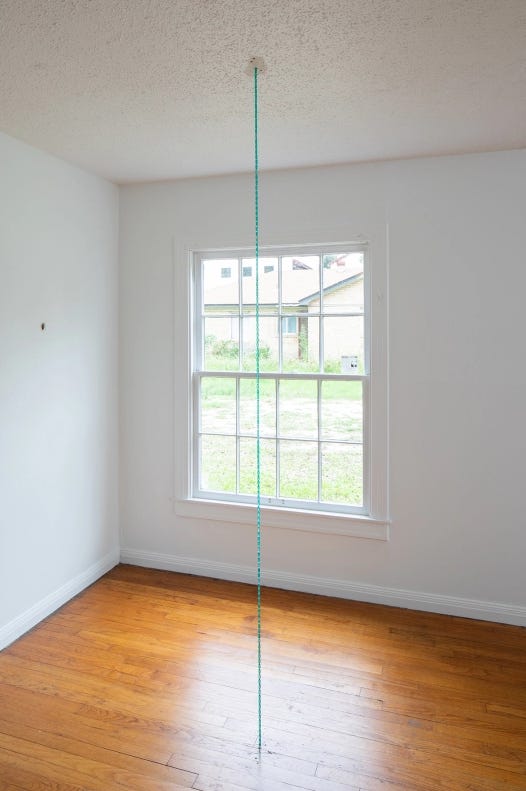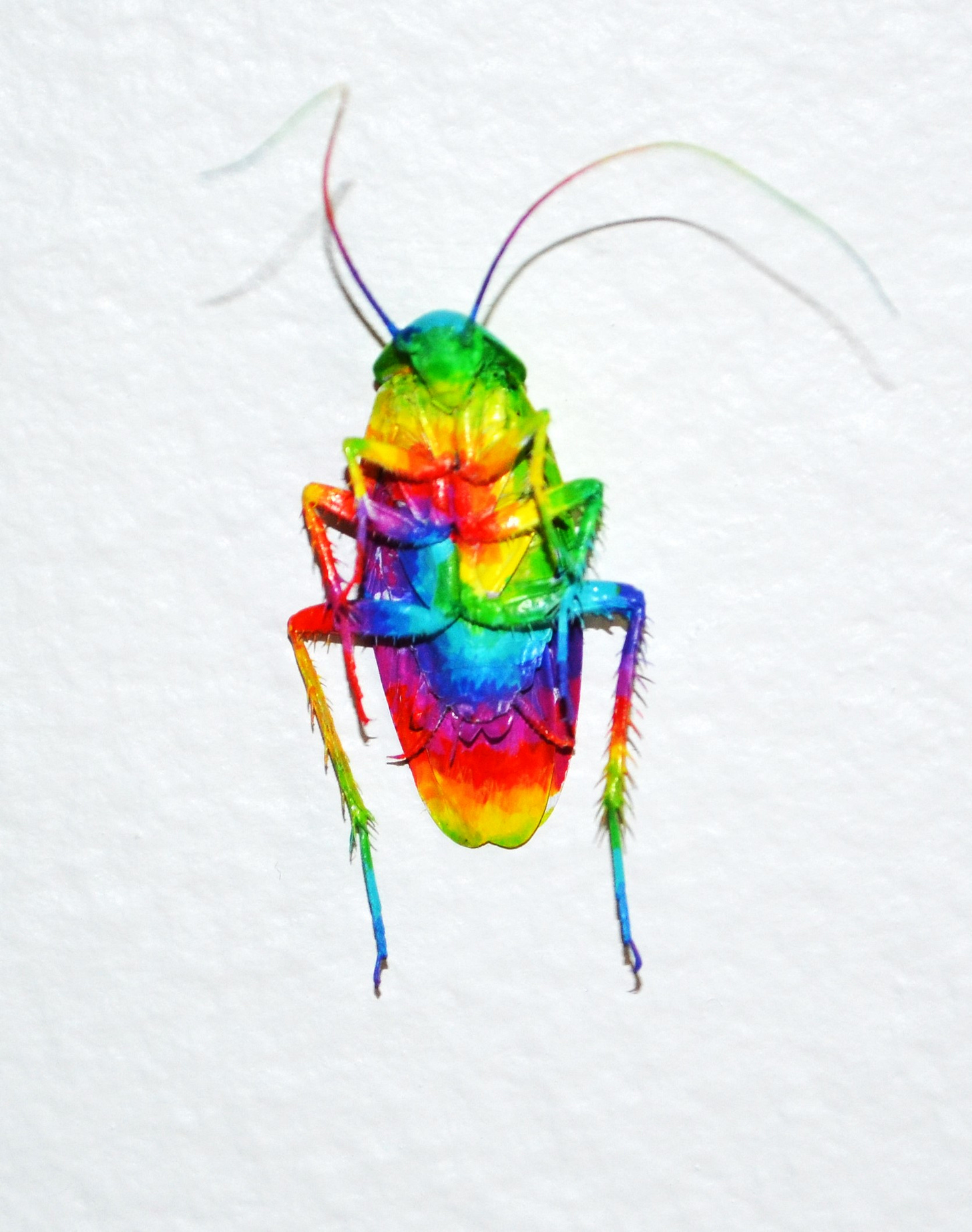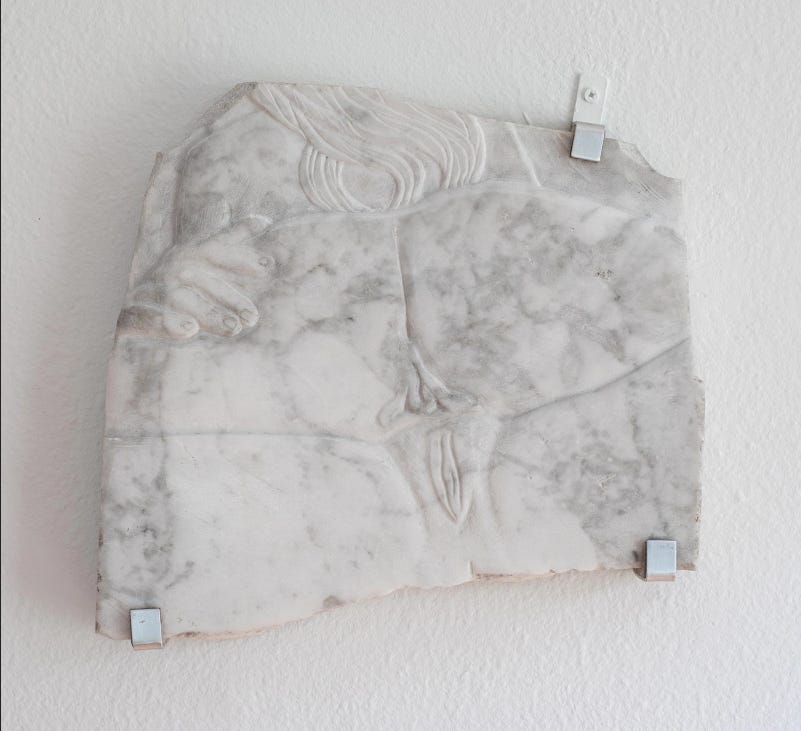Iva Kinnaird at F
Iva Kinnaird has a small presence on the local art scene. I realize how dismissive that sounds, but unlike a other notable Houston artists, she hasn’t had a ton of local solo exhibits. Here work is unassuming. She has not, for example, built a gigantic sculptural installation on an esplanade on Montrose, or had large solo exhibits at Lawndale or Diverse Works. And indeed, the exhibit I am writing about, Elizabeth Warren’s Ear, consists of very small artworks in a somewhat obscure house gallery, F.
Despite what I’ve written about here, Kinnaird has been around in Houston for a long time. I first met her probably in 2014 or 2015 at an opening at Scott Charmin Gallery, Edgar Meza’s wonderful (but now defunct) house gallery on the east side. In 2015 I published the sole issue of my magazine Exu, and to launch it, I had a sacrificial ritual in which I went down to a street corner and sacrificed bottles of cachaça and cigars to the Afro-Brazilian deity, Exu. I announced this ritual online and had two attendees, one of whom was Kinnaird. Here I am turning a review of Kinnaird’s recent artwork into stories about myself—what can I say? I am a vain, narcissistic person. But I also mention these encounters because they represent the relative paucity of my encounters with Kinnard or her art.
Elizabeth Warren’s Ear was therefore the most concentrated exposure I’ve had to Kinnaird’s artwork at one time. I have been told that Kinnaird house-sat in Marnie’s home (which is also the location of F), and a lot of the works are a result of that time. House-sitting may have been a favor done for Marnie and Matalon, but it in effect turned into a residency. Some of the works Kinnard has created are made of commonplace objects that one might find in a house—generic ibuprofen capsules and cockroach corpses. But one piece was carved from marble. Some pieces are site specific and some are site responsive. The works in Elizabeth Warren’s Ear don’t have an obvious thematic or stylistic unity, beyond being quite modest in size.
Ibuprofen was invented in the 60s and started being marketed in the USA in 1974. One of the most popular over-the-counter pain relievers, in pill form it is sold as motrin, which is usually small and orange. In capsule form, it is usually sold in a blue gelcap. It is this form that Kinnaird uses in her sculptures. Two of these pieces intentionally quote classics of modernism by Constantin Brâncuși, Endless Column and The Kiss.
This photo is from Kinnaird’s website—she took a much better photo than I could. This work is anchored at the bottom and top in holes that were drilled there for an earlier piece of art what was displayed in F’s small gallery.
The title of this piece, Endless Ache, makes fun of Brâncuși’s more cosmic title. And just Endless Column is in reality quite finite, so too are all aches. After all, you eventually get better or die.
What I liked about The Kiss is that with these materials, ibuprofen gelcaps and a rubber band, Kinnaird has made a very passable imitation of Brâncuși’s original.
Her other piece made from ibuprofen also recalls a famous piece of modernism, specifically the three dimensional gridlike structures of Sol LeWitt. As each caplet is longer and thin, they can be used as struts in a three dimensional cube. Kinnaird has made nine structures out of the blue, semitransparent caplets. Most are built on 90 degree angles like LeWitt’s structures, but at least one of them is built around tetrahedral structures. The shape of them to me implies a monumental structure, although they are at most a few inches tall.


Kinnaird uses actual cockroaches for several of the pieces in this show. The tile of Tie-Dye Guy V implies four predecessors. What strikes me about this is that a cockroach must be an inherently difficult surface on which to paint. For one thing, it is very small (although big enough that you would be alarmed to see it crawling around in your kitchen). And the parts of it are quite delicate, especially the antennas. And yet they are all painted with exceptionally bright acrylic paint—so bright that it makes me think that there may be white underpainting.
The other cockroach works are cockroach versions of the Warner Brothers Looney Tunes outros featuring the concentric rings. Kinnaird has replaced Porky Pig in the center of the circles with cockroaches. Here Kinnaird has painted jovial faces and clothes onto her cockroach corpses, to better match the wide eyes of and jaunty bow-tie of Porky Pig.
That’s All Folks! (1953) is painted in shades of grey, perhaps to resemble a Looney Tunes cartoon seen on TV in the age before color television.
There’s More Folks! (Evil Porky) makes the concentric rings blue, which seems contrary to the Looney Tunes logos I’ve seen, which are mostly red. Does changing the color make it evil?


A work that responds to the location of the exhibit is Filling. It is a hand-painted version of an extremely ordinary linoleum tile. The tile is apparently a missing part of a linoleum floor covering in the kitchen of F. In addition to reproducing by hand what is an ordinary bit of mass-produced architecture, Kinnaird apparently reproduced the missing space underneath the tile. I’m told that it would perfectly fit into the physical space where the missing part of the tile would have been, once upon a time. It is as if Kinnaird is reconstructing an ancient ruin, returning it to its original state.
The idea of ancient ruins comes up again with HOT LESBIAN PUSSY TO PUSSY (2GIRLSHOME), which is an image from pornographic video carved as a relief onto marble. The chunk of marble that the relief is carved on is a broken chunk, like what an archeologist might find at an ancient urban site. And indeed we had found all sorts of ancient pornographic reliefs and statuary and even paintings (in Pompeii, where paintings were well-preserved after its destruction by the eruption of Vesuvius). But what distinguishes this piece from those is that it is obviously contemporary. The pose of the two women is what one might see in a contemporary pornographic film—their genitals are facing the viewer directly, their legs are spread wide so the at the “camera” can see them, and they are shaved. But the presentation of the piece is very much like what one might find in the ancient art wing of a museum—it is attached to the wall with brackets, ready for us to ponder the mysteries of ancient sexuality.
In a way, this whole exhibit is like a display of antiquities from the future. Future archaeologists have gathered perplexing objects from our time without fully understanding the meaning and their use by people in 2022. Nonetheless, they display them as if they were precious bits of history, just as we do with classical and bronze age artifacts we have dug up over the centuries, sometimes mystified by them but still curious about what they say about our common humanity.
[Please consider supporting this publication by becoming a patron, and you can also support it by patronizing our online store. And one more way to support this work is to buy books through The Great God Pan is Dead’s bookstore. ]












